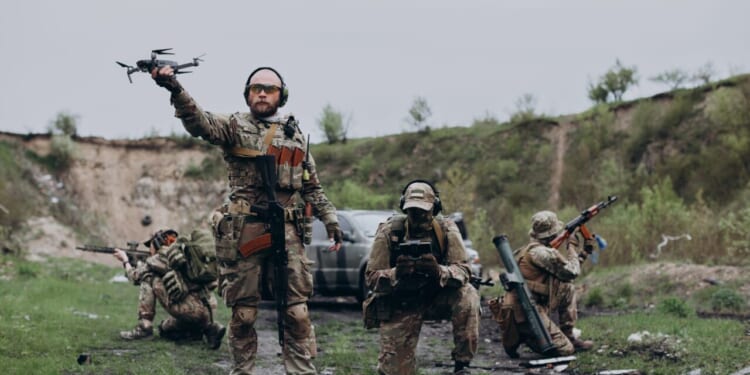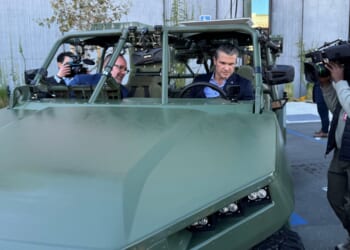A trick as old as warfare, using weather conditions to mask a military force’s movements, can be very effective.
Unmanned aerial systems have added another layer of complexity to ground operations in Ukraine. Every minute and hour they are on the field, Ukrainian and Russian infantrymen and tank crews look to the sky, listening for the dreadful buzzing noise that suggests a drone is out hunting.
Drone countermeasures vary in effectiveness. And even when kinetic or electronic warfare countermeasures work, that might not be enough, as both sides employ hundreds of unmanned aerial systems on a daily basis, hunting down enemy troops, striking key military and infrastructural targets, or reconnoitering the battlefield. So, the two forces often have to resort to older, more traditional methods to conceal their movements.
Rain and Fog
As a way to counter Ukrainian unmanned aerial systems, the Russian military is using adverse weather conditions to mask its assaults.
“Russian forces appear to be conducting larger mechanized assaults during rainy and foggy weather conditions, which complicate Ukrainian drone operations,” the Institute for the Study of War assessed in a recent intelligence update.
A trick as old as warfare, using weather conditions to mask a military force’s movements, can be very effective. The Russian military has had a long and successful history using deception, or Maskirovka, to achieve its goals.
The Ukrainian military has used unmanned aerial systems to great effect to spot and strike against Russian armor and vehicle concentrations. Usually, before mounting a mechanized attack against the Ukrainian positions, the Russian forces will gather the available assets, including main battle tanks, infantry fighting vehicles, armored personnel carriers, tactical trucks, and artillery guns.
Recent Russian large, mechanized assaults have coincided with adverse weather conditions, including heavy rainfall and fog.
An Attempt at Combined Arms Operations
In addition to relying on adverse weather conditions to mask large, mechanized assaults, the Russian forces are once again attempting to conduct combined arms operations.
“Russian forces may also be reverting back to conducting mechanized assaults in areas where Russian infantry are struggling to advance,” the Institute for the Study of War added in its assessment.
The Ukrainian forces are fighting a defensive campaign, creating fortified strongholds wherever they can. Infantry assaults are not conducive to capturing heavily fortified positions, as the Russian forces have been finding out. So, the Russian military is trying once more to conduct limited combined arms offensives to maximize the chances of success, especially in the Donbas area of operations.
Combined arms operations try to combine different arms, such as infantry, combat engineers, artillery, air power, armor, and drones, in one punch to push through an adversary’s defenses. Used effectively, combined arms operations are very difficult to defend against.
“These units may be reverting back to conducting mechanized assaults in the face of more challenging Ukrainian defensive positions near Shakhove, or potentially after Russian forces assess that Ukrainian defenses are attritted following weeks of Russian infantry assaults,” the Institute for the Study of War assessed.
Despite deception tricks and updated tactics, the Russian forces continue to take heavy casualties on a daily basis in exchange for limited progress on the ground.
About the Author: Stavros Atlamazoglou
Stavros Atlamazoglou is a seasoned defense journalist specializing in special operations and a Hellenic Army veteran (national service with the 575th Marine Battalion and Army HQ). He holds a BA from the Johns Hopkins University and an MA from the Johns Hopkins’ School of Advanced International Studies (SAIS). His work has been featured in Business Insider, Sandboxx, and SOFREP.
Image: Shutterstock.

















